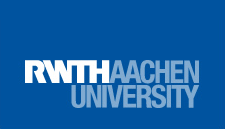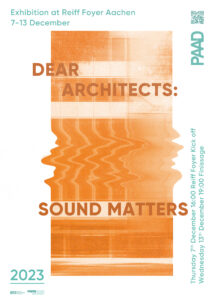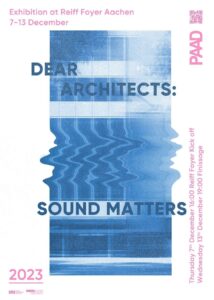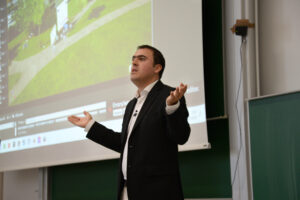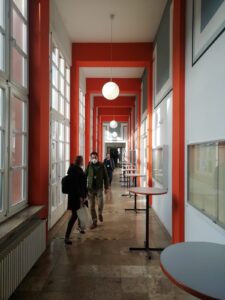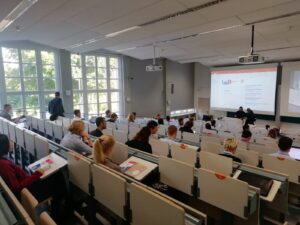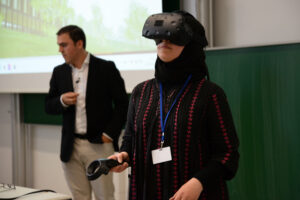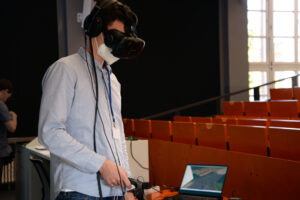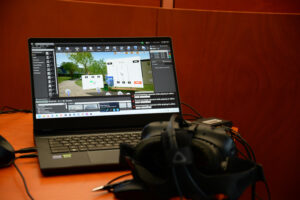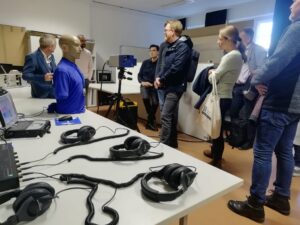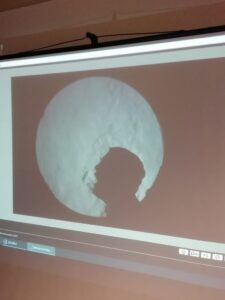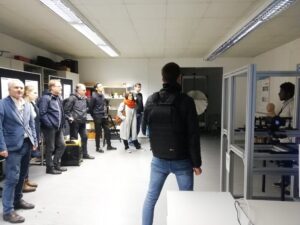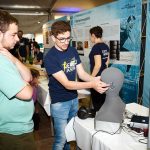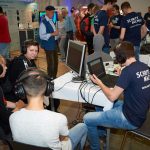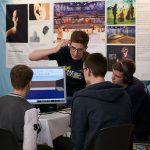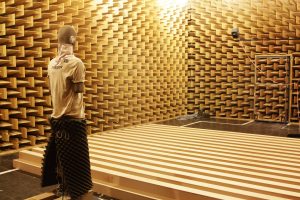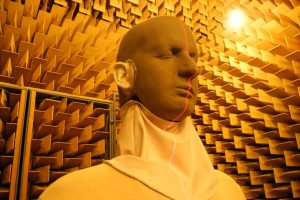Kategorie: ‘Room Acoustics’
New exhibition DEAR ARCHITECTS: SOUND MATTERS
How often do you think about sound? How do you want people to feel when you are designing a space? Good acoustics design is inherent to architecture. Every decision you make about shape, form, geometry, volume and materials defines the acoustics. So how do you design proactively for the right outcomes, the first time?
With the comprehensive exhibition DEAR ARCHITECTS: SOUND MATTERS we want to link the field of acoustics more with that of architects. We show how acoustics are integrated into the design process and how auralization and simulation tools make it possible to experience acoustics at an early stage.
The exhibition is organized by the PAAD group in collaboration with the Design Computation chair at the RWTH.
Place: Reiff Foyer of the Faculty of Architecture, RWTH Aachen University, Schinkelstraße 1, 52062 Aachen
Dates: 7-13 December
Finissage: 13th December at 19h
Contact person: Josep Llorca-Bofí, josep.llorca@akustik.rwth-aachen.de
IHTA at the BauSIM conference in Weimar
From the 20th to the 22nd September 2022, the BauSIM conference took place. The scientific core topic of the conference is traditionally the energetic simulation in the building sector and offers an ideal discussion forum for experts from science and industry for mutual exchange. The conference is organized by the and IBSPA Germany-Austria, member of the International Building and Performance Simulation Association (IBPSA) This year’s conference introduced a new session on acoustic simulation topics, and our institute was present.
In particular, our Junior Principal Investigator Dr. Josep Llorca-Bofí, from the PAAD group was invited as key-note speaker, talking about The city – A machine for noise? Virtual acoustics in architectural design research. Together with our PhD student M. Sc. Jonas Heck and Professor Michael Vorländer, the following research paper was presented: 3D photogrammetry for auralization – An approach for geometry simplification and material categorization.
- Key-note talk Dr. Josep Llorca-Bofí
- Bauhaus-Universtät Weimar
- BauSIM lecture hall
- IHTApark demonstrator
- Immersive audio and visuals
- Portable research laboratory using head-mounted display and equalized headphones
- Visit to the acoustic laboratory at the chair of Building Physics
- Visit to the acoustic laboratory at the chair of Building Physics
- Optic visualization of thermal air movement
- Visit to the optics laboratory at the chair of Building Physics
DAGA 2021 poster award
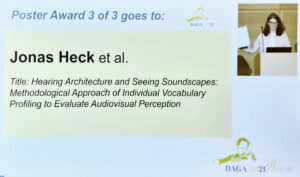 At the DAGA Acoustics Annual Conference 2021, one of the poster awards has been given to the work presented by Jonas Heck, Josep Llorca-Bofí and Michael Vorländer, with the title: Hearing Architecture and Seeing Soundscapes: Methodological Approach of Individual Vocabulary Profiling to Evaluate Audiovisual Perception.
At the DAGA Acoustics Annual Conference 2021, one of the poster awards has been given to the work presented by Jonas Heck, Josep Llorca-Bofí and Michael Vorländer, with the title: Hearing Architecture and Seeing Soundscapes: Methodological Approach of Individual Vocabulary Profiling to Evaluate Audiovisual Perception.
Congratulations!
PAADtalks!
PAADtalks! are here: the interdisciplinary colloquium organized by the Person-focused Analysis of Architectural Design – PAAD group in collaboration with the Human Technolgy Center at the RWTH Aachen University. This series of academic lectures gathers humanities and technological approaches to architecture, and constructs collaboration networks for upcoming actions. There is no complete way to approach a person-focused analysis of architecture without an integral view. PAADtalks! spreads architectural research from the broad sense, beyond any reductionism or utopian pretension. More information through this email.
Lautenbach: The acoustical design process of a classical concert hall
June 16th 2023
Kahle: The Concert Hall – a machine for music? Or how to integrate acoustic design into architecture
June 3rd 2022
Lachenmayr: Applied room acoustics – How to build a concert hall
Jan 14th 2022
Chatterjee: The neuroaesthetics of architectural spaces
October 4th 2021
Kang: Designing soundscape in open public spaces: a framework and potentials
July 2nd 2021
Psarra: Contextual sensibility and influence in the architecture of Carlo Scarpa
May 21st 2021
Promotionsprüfung Dipl.-Ing. Lukas Aspöck
Am 10. Juli 2020 hat Herr Lukas Aspöck seine mündliche Promotionsprüfung erfolgreich abgeschlossen.
Herr Aspöck promovierte über das Thema:
„Validation of room acoustic simulation models“
Abstract:
Already in ancient times, the goal existed to design appropriate environments to transport acoustic signals from a sound source to an audience. Strongly connected to this is the interest to understand room acoustic effects and, in the best case, to accurately predict them. This is of particular relevance today in prestigious projects such as the construction of concert halls, but is also of great importance in everyday life, for example in public buildings. Room acoustic simulations based on the concepts of geometric acoustics have been developed for such purposes for more than 50 years and have been extensively investigated. However, there is still insufficient knowledge about the uncertainty and validity of the results of the room acoustic simulations used today. In addition, many highly simplified simulation models are often used without questioning the validity of the results.
In order to offer developers and researchers a possibility to comprehensively validate the results of their room acoustic simulation, a database with eleven different acoustic scenes was developed, documented and published. The scenes cover both simple environments, where individual acoustic effects such as reflection or diffraction are isolated, and complex spatial situations such as a concert hall. In addition to a detailed description and the definition of input data, acoustic measurements were carried out for all scenes, which serve as reference for the simulations.
Furthermore, a study is presented which was designed following the concept of three previously conducted round robin experiments. Here, the simulation results of up to six participants, who were not informed about measurement results in advance, are compared with each other and with the results of the corresponding measurements. The evaluation of the results for the simple scenes reveals various weaknesses of the geometric acoustics, but in the case of the complex scenes it nonetheless shows acceptable results in the medium frequency range. In further investigations it was determined how much room acoustic simulation results deviate from measurements if the user knows the measurement results beforehand and input data of the simulation is adjusted manually or systematically. From these results it can be concluded which deviations from actual, measured values can be expected in the room acoustic simulation of both unknown and known rooms. Furthermore, this work provides a basis for improvements in the field of geometrical acoustics simulation models and with respect to the determination and selection of correct input data for the simulation.
Das ITA gratuliert sehr herzlich!!
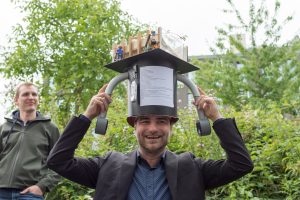
Wallace Clement Sabine Award 2018 für Prof. Michael Vorländer
Die Wallace Clement Sabine Medal der Acoustical Society of America (ASA) wird seit 1957 an Wissenschaftler verliehen, die sich in den Bereichen Raum- und Bauakustik besondere Verdienste erworben haben.
Diese Ehrung wurde bei der letzten ASA-Tagung im November 2018 an Prof. Dr. Michael Vorländer verliehen.
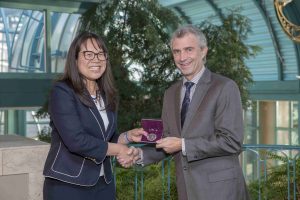
Medaillenübergabe durch ASA-Präsidentin Lily Wang an Michael Vorländer
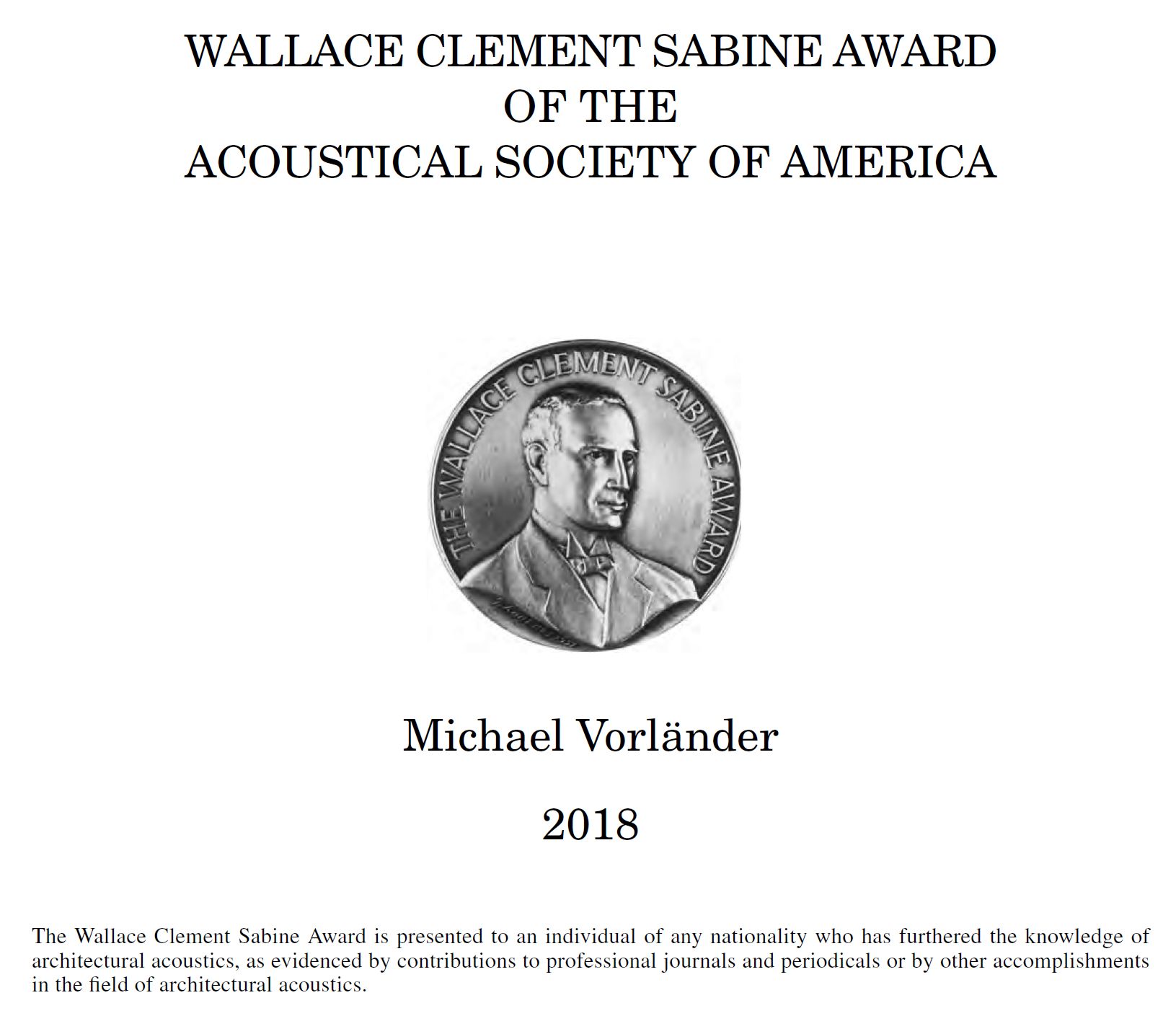
Das ITA bei den „Highlights der Physik“ in Dortmund
Nach einer mehrjährigen Pause war das Institut für Technische Akustik im Jahr 2018 wieder bei den „Highlights der Physik“ vertreten. Mit dieser Veranstaltungsreihe möchte das Bundesministerium für Bildung und Forschung (BMBF) die Öffentlichkeit, insbesondere Schülerinnen und Schüler, mehr für die zahlreichen Themenbereich der Physik begeistern. Gastgeber und Mitorganisatoren der Veranstaltung in diesem Jahr waren die Stadt Dortmund sowie die Technische Universität Dortmund, die sich in den Projekttagen vom 17.9.2018 bis zum 22.09.2018 über rund 48.000 Besucher an den vielen Ständen und Vorträgen freuten.
Das ITA war mit einem Stand zum Thema „Mit zwei Ohren hört man besser“ durch den Mitarbeiter Philipp Schäfer sowie durch die studentischen Mitarbeiter Philipp Eschbach und Pascal Palenda vertreten, welche interessierten Besucher die Grundlagen und aktuelle Forschungsfragen im Bereich des binauralen Hören und der Raumakustiksimulation anschaulich demonstrieren.
Die offizielle Pressemitteilung des Veranstalters finden Sie hier. Vielen Dank an Dr. Axel Carl für die hervorragende Organisation und an die Fotografen von Offer & Offer für die Bereitstellung ihrer Fotos.
- Wie funktioniert binaurales Hören? (© Offer & Offer 2018)
- Demonstration der interaktiven Raumakustiksimulation (© Offer & Offer 2018)
- Erklärung der interaktiven Raumakustiksimulation (© Offer & Offer 2018)
Acoustic Virtual Reality movies online
On the Acoustic Virtual Reality website three movies have been added that were shown several times at different conferences.
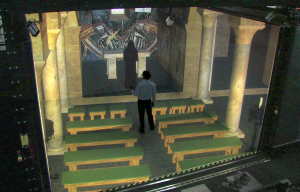
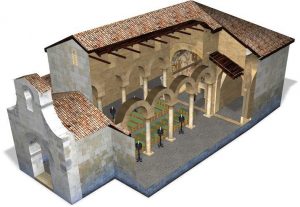
(Copyright ITA)
SEACEN International Round Robin on Auralization
Researchers of the SEACEN project have officially launched the 1st International Round Robin on Auralization. In this extensive comparison of simulation and auralization tools, researchers, users and developers can contribute their results for nine different acoustical scenes including a variation of simple acoustical situations as well as typical room acoustical scenarios. Everyone is invited to particpate. In the first phase of the Round Robin, participants are ask only to use the provided input data. Deadline for the submission of the results is december 31st, 2016.
- Simple reflection scene
- Room acoustics measurement Berlin chamber music hall
- Measurement of binaural impulse responses using FABIAN dummy head
More information can be found on the offical Auralization Round Robin website.
